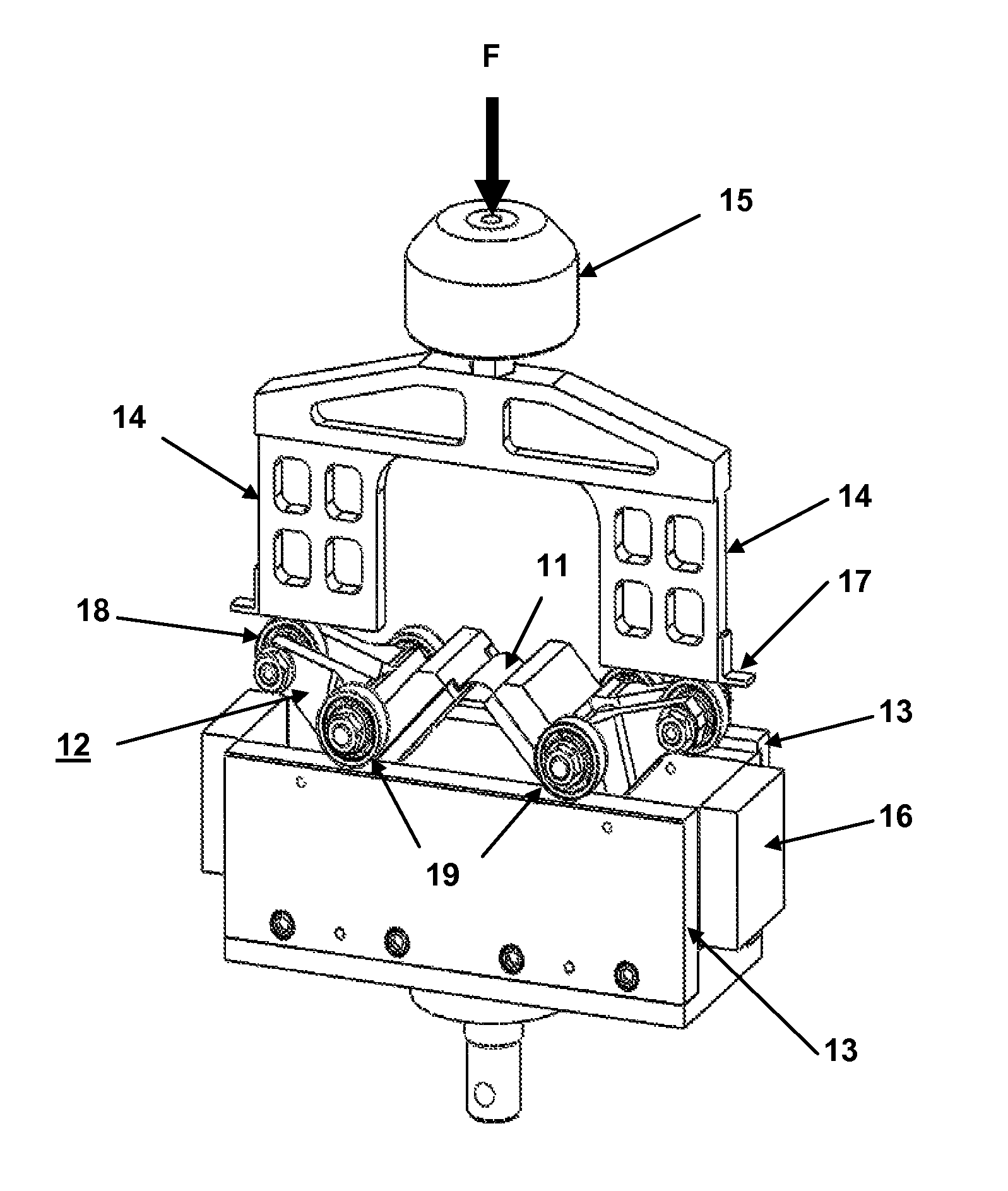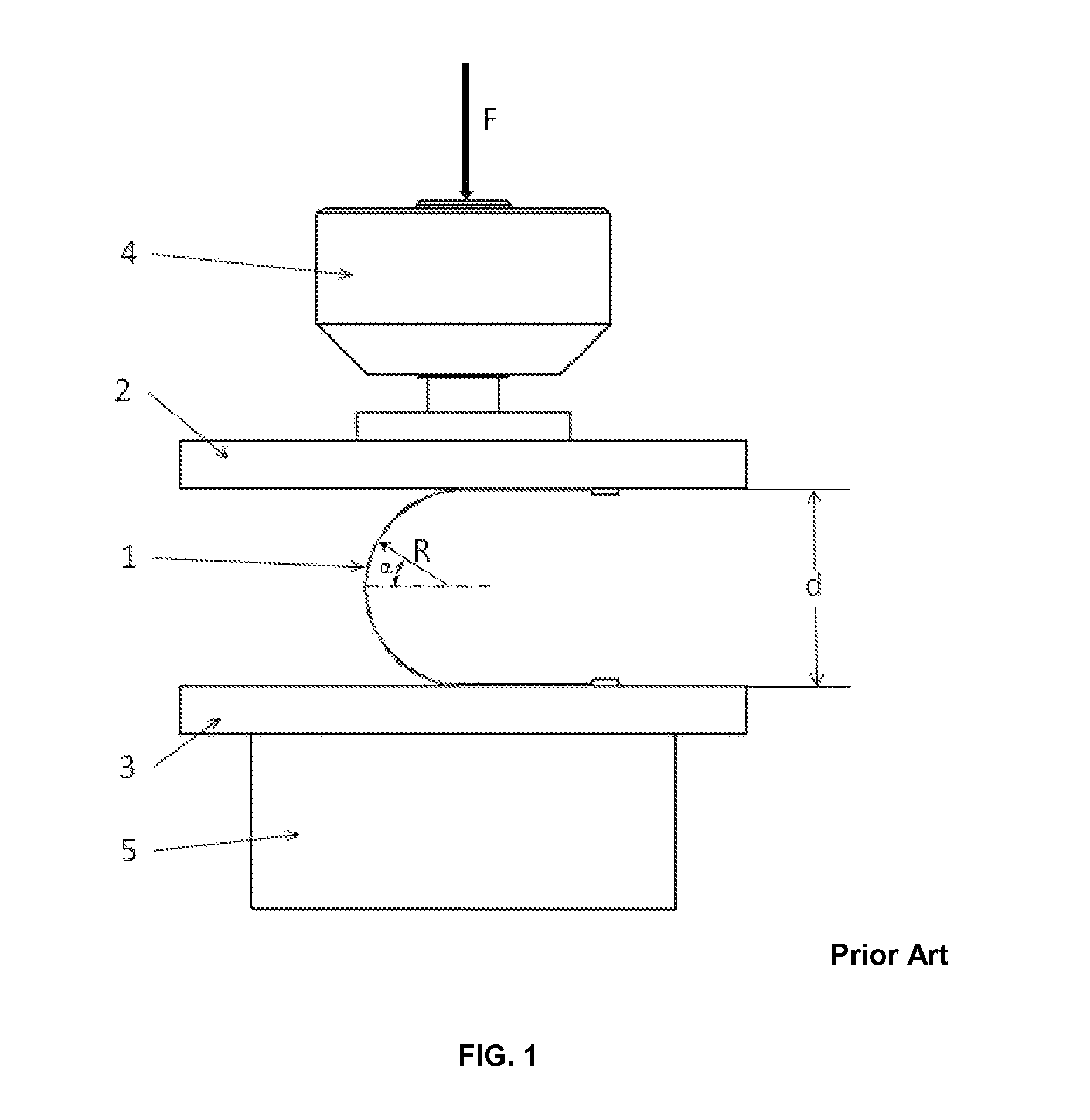Device for testing thin specimens in pure bending
a thin specimen and pure bending technology, applied in measurement devices, instruments, scientific instruments, etc., can solve the problems of failure to characterize the nonlinear constitutive behavior over the full strain range common to deployable structures, subject to strain levels and deformations outside of traditional composite structural applications, and difficult design and analysis of deployable structures
- Summary
- Abstract
- Description
- Claims
- Application Information
AI Technical Summary
Benefits of technology
Problems solved by technology
Method used
Image
Examples
Embodiment Construction
[0018]An improved test fixture has been designed that allows pure moment to be imparted into the composite test coupon (thin composite laminate specimen). As shown in FIG. 2, the test fixture is used to clamp a coupon 11 between two rotating carts 12 that are driven downward by the cross members 14 pushing downward upon the bearings 18 at the end of the near vertical arms of the carts. As the cross members 14 move downward, the carts rotate about the axes of the lower bearings 19, thus apply the bending moment on the coupon 11. The carts are very stiff compared with the coupon and are considered perfectly rigid. As the coupon deforms, the carts translate along tracks 13 until they reach the extreme position that corresponds to a coupon arc angle of 180° or until the coupon fails. Load (F) and cross member displacement are measured to calculate the applied moment and curvature. The load cell 15 placed between the cross member and the test frame is used to measure the applied load F. ...
PUM
| Property | Measurement | Unit |
|---|---|---|
| arc angle | aaaaa | aaaaa |
| bending properties | aaaaa | aaaaa |
| length | aaaaa | aaaaa |
Abstract
Description
Claims
Application Information
 Login to View More
Login to View More - R&D
- Intellectual Property
- Life Sciences
- Materials
- Tech Scout
- Unparalleled Data Quality
- Higher Quality Content
- 60% Fewer Hallucinations
Browse by: Latest US Patents, China's latest patents, Technical Efficacy Thesaurus, Application Domain, Technology Topic, Popular Technical Reports.
© 2025 PatSnap. All rights reserved.Legal|Privacy policy|Modern Slavery Act Transparency Statement|Sitemap|About US| Contact US: help@patsnap.com



